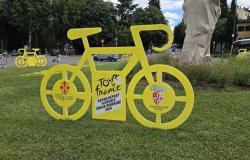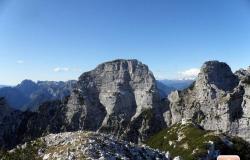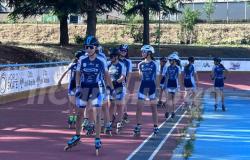The history of “Rione dei Pozzi Neri” it was brought to light in 2022 in a book edited by Loretta Poggi. “The area was so named due to the presence of enormous tanks where the sewage collected in the historic center of the city of Forlì was poured – we read in the book “Forlì green city”a photographic project by Luca Massari with a historical essay by Gabriele Zelli and a contribution by architect Fabio Berni -. A daily operation in progress until the 1960s, which progressively decreased with the construction of the sewerage system, and which was never an incentive to increase the arrival of new residents in the area taken into consideration”.
“From this point of view, however, the establishment of companies in the neighboring areas which, starting from the last decades of the nineteenth century and in particular at the beginning of the twentieth century, constituted the first industrial area of Forlì was fundamental. The new production settlements could count on rail transport, a real revolution in those years when goods traveled only on vehicles pulled by animals. Many of them were connected to one specific railway connection with the goods yard and the tracks that served this purpose remained, in several cases, until fifty years ago. It is worth remembering some of the most important activities referred to, for the benefit of the generations who will read this publication and who have not seen them operational, as well as in consideration of the fact that the places where they operated have been completely transformed over the last few decades. These are the most important companies: the iron foundry gas company, which later became the Forlanini factory, Eridania, the Battistini shoe factory, the Cooperativa Fumisti, Mangelli, Bartoletti. Slightly more decentralized are companies such as Becchi and the furnace in Via Bengasi, without forgetting the fundamental role played by the livestock market which was held at the Foro Boario. All these activities, together with others of more modest size, have provided work to thousands of people and a living to as many families. They also encouraged immigration from the countryside to the city, in particular of laborers who carried out a decidedly precarious activity, as well as from the towns of our hills and mountains, and from other regions, in particular from the South”, says the text.
“In this context, along the Piave, Isonzo and Pelacano streets, the latter two as is rightly remembered in Loretta Poggi’s publication until the middle of the last century were the ring road of Forlì because Viale Italia did not yet exist, the first houses began to arise. The number of homes grew as time went by, particularly starting from the 1960s, always taking into account the decidedly unedifying presence of cesspits, which the area has always been characterized as popular, in the meaning of the term regarding cultural, political and customs factors. It is no coincidence that two political circles, the republican one “Aurelio Saffi”, known as the Via Lunga, and the communist club wanted by the “Andrea Costa” Cooperative, known as the “Svers”. , were for decades the points of reference for a large part of the population who lived beyond Piazzale Santa Chiara”.
“It should be remembered – we read again – that in the medieval and Renaissance periods the area of the city which today hinges on the Piazzale Santa Chiara roundabout could count on one of the most important accesses to the city centre. From this side of the city, even before Via Ravegnana was built in the 19th century, for centuries all those who came from Ravenna to Forlì and vice versa passed through it, a very important amount of travel which has favored trade, cultural and social exchanges for over thirty years a notable transformation has taken place in this part of the city, determined primarily by the construction of several condominiums and public housing which have increased the number of residents. Furthermore, those who pass along the Pelacano and Isonzo streets and do not know the previous history will immediately notice that here space has been found for the new multifunctional gym equipped for artistic gymnastics, a sporting discipline strongly rooted in the city, and a large park (called Peace Park) develops on its rear part. While on Via Piave stands the “Ada Maria Gobetti” nursery school, which hosted hundreds and hundreds of girls and boys aged three to six in their pre-school years. Finally, in this part of Forlì, the new headquarters have been built, sometimes of provincial importance, of some of the most important trade associations: National Confederation of Crafts and Small and Medium Enterprises (CNA), National Confederation of Direct Cultivators, Confesercenti , and of the main trade union both at local and national level, the Italian General Confederation of Labor (CGIL). These places are frequented daily by hundreds of members who go there to use the services provided by the relevant offices, in particular by the respective patronages or by companies established for this purpose”.
“The Peace Park, which has never had its own physiognomy and is not characterized in any way other than by the presence, among others, of eight olive trees planted at the time of the inauguration during a ceremony in which they participated, together with the mayor Franco Rusticali (1938 – 2015), the representatives of the cities twinned with Forlì, of the Palestinian city of Nablus, of the Israeli Embassy in Italy, of the Municipality of Forlì, of the Diocese of Forlì-Bertinoro and of the Prefecture of Forlì-Cesena The name of the area is due to the presence of these plants, a symbol of peace, together with the tables placed on site which report the phrase of Pope John Paul II, dictated on the occasion of the 50th anniversary of the end of the Second World War: ” While we are celebrating the end of the war, we cannot yet celebrate the victory of peace” and the Moment to Peace sculpted by the artist Gianni Cinciarini (1943 – 2013). A redevelopment project is currently underway, which has become even more necessary after the flood of last May, which will also allow neighboring areas to be merged, such as that once occupied by the Babini Fornace, of which there have been no traces for decades, and the large land surrounding the “Girolamo Mercuriali” Artistic Gymnastics Gym”, concludes the text.





